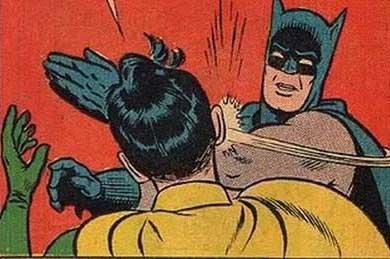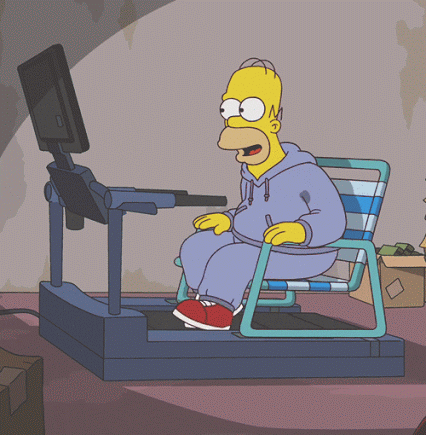1) This is a MUST READ for anyone that puts their hands on their patients. Erson shares 5 profound articles that changed his career.
2) StrongFirst Tactical Strength Challenge Program
3) “Think of PNF as a way of means of feeding the sensorimotor system specific purposeful information to create a purposeful and functional motor strategy” – Ramez Antoun
4) Post-Activation Potentiation – A phenomena by which muscular performance characteristics are acutely enhanced as a result of their contractile history (Brett Contreras). You can use this to improve movement patterns and performance.
5) Bret Contreras goes over some advanced high-threshold core trainings for higher level clients. Good stuff and a reminder to take it to the next level when you can.
6) “Our perceptions are formed through a process of multisensory integration. This means that, for example, sensory information from the eyes can change how something tastes, or that sensory information from the ears can affect how something feels.” – Todd Hargrove on the Marble Hand Illusion Study
7) “A dissection study by Gibbons and Mottram (2004) found a 3rd layer situated deep to the previous 2 described with short fibres that cross the sacroiliac joint (SIJ) and have relations with multifidus, the deep hip intrinsics and the pelvic floor.” They call this layer the Deep Sacral Gluteus Maximus.
8) “the language of movement is written in feel, not in words or pictures” – Gray Cook goes over when to coach and when to correct
9) How many patients do you see that get injured because of the elliptical? Seth Oberst goes over why this isn’t the ideal “exercise” for your patient in this post. “When we can’t feel the ground, we adapt thru maladaptive co-contraction (like walking on ice) in the leg musculature reducing movement efficiency for when it matters most – like doing actual athletic or sport movements, even walking.“
10) Subjective history may not always be accurate. “Every time you pull up a memory, say of your first kiss, your mind reinterprets it for the present day, new research suggests. If you’re in the middle of an ugly divorce, for example, you might recall it differently than if you’re happily married and life is going well.”
11) Short muscles are a problem. Not because of adaptive restrictions, but because of the vicious neuromuscular cycle. Muscles that are in a shortened position often have increased neural drive (neural activation). This means they often become over facilitated and need to be inhibited…not stretched.
12) Bridge Progressions from Chris Johnson. I particularly like the variation on the 2nd exercise and have started prescribing it in my practice.
13) Interesting study on rotator cuff repairs: “Patients who underwent rotator cuff repair have improved function and reduced pain, regardless of the structural integrity of the repair. Patients with an intact repair have greater strength than those with retears.”
14) It seems like mobility is getting all the credit these days. And for good reason, tons of mechanoreceptors, allows for fewer compensations, centration, motor control, core pendulum theory, correlated with lower morbidity, etc. But what about good ol’ fashion strength? Strength is an important physical characteristic that allows your patients to move better and increases their ability to adapt to physical stress. Think about your older patients. If they’re having trouble going from sit to stand, is an ankle mobilization or lower extremity strengthening program going to help them more? Recent research is now backing up the importance of strength in regards to mortality. Don’t forget to get people stronger.
15) I wish this would have been around back when I took biology.
16) “Sleep complaints are present in up to 88% of chronic pain disorders and at least 50% of patients presenting with insomnia also suffer chronic pain.”
17) Lifestyle has a great influence on recovery. Here are 4 lifestyle choices that I like to discuss with my patients.
18) During my last affiliation of PT school my CI, Marcus Forman, used to always preach that “the devil is in the details”. He was right in more ways than I could have imagined. Mike Reinold goes over the details of the simple hip flexor stretch. Don’t let your patients hack up this stretch.
19) Erson’s 5’s – 5 Things Your Patient Needs for Successful Outcomes: Education, Mobility, Symmetry, Stability/Motor Control, Homework. 5 Cervical Radiculopathy Treatments – I’ve recently been amazed at how well kinesiotaping works for symptom relief. – 5 Modern Ways to Look at Manual Therapy
20) A review of pain from Move Forward. A physical therapist’s guide to understanding pain.
21) I wrote up this article on grip strength and the rotator cuff for Physiospot.
22) Eric Cressey gives 5 tips for people performing/teaching boot camp class, crossfit, and/or other metabolic resistance training classes. This can improve performance and decrease risk of injury for those participating in these types of classes.
23) I’m a big fan of Adriaan Louw and his work. Zac “Review Machine” Cupples wrote this up about his course (including a great Predator reference). I’ve always liked the ion explanation: “When someone is extra sensitive, the nerves increase their resting excitement level so action potentials more readily occur. Adding more ion channels to less myelinated areas can further compound this sensitivity. Fun fact – Ion channels change every 48 hours, and therapy can positively influence the change.”
24) Nice review of Andreo Spina’s course – “The longer the muscle is when it is contracted, the more force through the tendon/connective tissue at the attachment site” – “All connective tissue (muscles, bones, fascia, etc.) are all just different expressions of the same material.”
25) People You Should Know: Nikolai Bernstein is the one of the Godfathers of motor control and motor learning. Read about his Degrees of Freedom Problem (“Bernstein Problem”).
26) Top 3 Tweets of the Month
Tim Cocks (@altThinq) live tweeted some great stuff from Explain Pain 3. Look at #ExplainPain3.
- @medicalaxioms – It takes considerable knowledge just to realize the extent of your own ignorance. –Thomas Sowell
- @altThinq – Our current understanding is that as the brain learns it develops precision through inhibition of neurons #ExplainPain3
-
@graycookPT – Most of us are too verbal in our movement instruction. We should cause a change, not coach a change.
27) This is pretty much what my exercise routine was during March Madness.




